#ImportLicense
Explore tagged Tumblr posts
Text
How To Get Import And Export License In USA: Quick Overview
If you're wondering how to get import and export license in USA, the good news is that for most goods, there’s no “universal” license. But there are still essential registrations and agency rules you need to follow. Here's a simplified guide:
Get an EIN from IRS Your business needs an Employer Identification Number (EIN) for all customs paperwork.
Register with U.S. Customs (CBP) Importers must file a Customs bond and get setup for entry filings.
Use ACE (Automated Commercial Environment) ACE is the U.S. portal to file import/export data with customs and partner agencies.
Check Commodity-Specific Licenses Some goods like food, weapons, or medicine need approval from agencies like FDA, USDA, or BIS.
Exporters: Use the AESDirect Portal If your shipment is over $2,500 or needs a license, you must file through AESDirect via ACE.
Know the ECCN and HTS Codes Classify your goods properly using HTS for imports or ECCN for controlled exports.
Partner with a Customs Broker or Freight Forwarder They can help manage filings, licenses, and compliance—especially for new businesses.
Stay Compliant with U.S. Laws Stay updated with regulations from CBP, BIS, and other agencies to avoid penalties.
Maintain Accurate Trade Records Keep all documents related to imports and exports for at least 5 years.
Knowing how to get import and export license in USA is key to running a smooth cross-border business that stays on the right side of regulations.
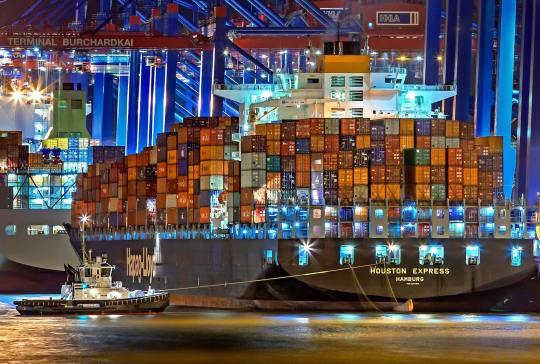
0 notes
Text
DGFT India: Latest Updates, Policies & Online Services for Import-Export
Stay updated with the latest DGFT India notifications, trade policies, and online services for exporters and importers. Access IEC code, license application info, and DGFT registration guides.

What is DGFT and Why is it Important for Indian Businesses?
The Directorate General of Foreign Trade (DGFT) is a key division under the Ministry of Commerce and Industry, Government of India. It is responsible for formulating and implementing foreign trade policies that promote exports and regulate imports. DGFT plays a crucial role in simplifying international trade, ensuring policy compliance, and offering incentives that enhance India’s position in the global trade ecosystem.
Functions of DGFT in India
DGFT performs a wide range of functions that are essential for businesses involved in international trade:
Issuance of Importer Exporter Code (IEC): No business can engage in import or export in India without obtaining an IEC from DGFT.
Export Promotion Schemes: DGFT manages schemes like RoDTEP, SEIS, MEIS (now phased out), and Advance Authorization, offering financial benefits and duty exemptions to exporters.
Policy Formulation: DGFT frames the Foreign Trade Policy (FTP), which outlines rules, procedures, and incentives applicable to Indian exporters and importers.
Online Services: Through the DGFT online portal, traders can apply for IEC, licenses, scrips, and check application status — streamlining operations digitally.
DGFT Services Offered to Indian Exporters and Importers
IEC Registration and Modification
Export and Import Licensing
Scrip Management (MEIS, SEIS, RoDTEP)
Advance Authorization Scheme
Export Obligation Tracking
Foreign Trade Policy Guidance
Helpdesk and Grievance Redressal
Benefits of Engaging with DGFT
Ease of Doing Business: With digital transformation and transparent systems, DGFT has simplified many licensing and documentation processes.
Financial Incentives: Exporters can claim duty credits and refunds under schemes managed by DGFT, improving profitability.
Trade Compliance: Following DGFT guidelines ensures your trade practices remain legally compliant, reducing the risk of penalties.

DGFT Compliance and Support Services
Businesses in India often seek professional support for DGFT compliance. DGFT consultants assist with:
IEC application and renewal
Filing for export incentives
Managing license-related queries
Audits and documentation
Staying updated with policy changes
Whether you’re a small exporter or a large enterprise, aligning with DGFT norms is essential for long-term trade success.
Conclusion
DGFT is the backbone of India’s export-import system. From policy formulation to incentive disbursement and compliance regulation, it empowers Indian businesses to grow globally. Staying compliant with DGFT rules and leveraging its schemes can lead to significant cost savings and business expansion. If you’re involved in foreign trade or planning to enter international markets, consulting DGFT experts can help streamline your operations and maximize export benefits.
#DGFT#DGFTIndia#ImportExportIndia#IECCode#EXIMPolicy#DGFTNotifications#TradeCompliance#ExportLicense#ImportLicense#ForeignTradeIndia#DGFTServices#IndianExporters#DGFTRegistration#DGFTOnline#IndiaTradePolicy#MSMEDGFT#DGFTUpdate#DGFTPortal#DGFTHelpdesk
1 note
·
View note
Text

Contact Us Today!
Visit us: https://lvsdxb.com/
Call us: Call us: (+971) 58 556 7272 | (+971) 50 142 7727
Mail us: [email protected]
#BusinessSetupDubai#ExportLicense#ImportLicense#DubaiBusiness#LeVamos#BusinessConsultants#DubaiConsultants#BusinessLicense#HassleFreeLicensing#BusinessSolutions#UAEBusiness#StepByStepSupport#AffordableLicensing#TailoredSolutions#DubaiEntrepreneur#GlobalTrade#ImportExport#BusinessOpportunities#ExportImportDubai#LicensingExperts
0 notes
Text
Does an importer need an LMPC certificate?
Yes, the importer needs an LMPC certificate.
LMPC Certificate For Importers
The LMPC certificate, also recognized as the legal metrology certificate, is a vital mandatory document essential for importers dealing with pre-packaged commodities in India. Not only importers but also manufacturers and packers of pre-packaged goods are mandated to obtain the LMPC certificate in accordance with the Legal Metrology Act. This certificate acts as evidence that the imported packaged commodities comply with pertinent regulations, encompassing precise labeling, weight, and measurement.

PROCESS
Application Form Submission: Applicants must complete and submit the application form to the relevant authorities.
Document Verification: Ensure the submission of duly signed and verified documents as mandated by the authorities; attach the necessary documents during the application process.
Fee Submission: Following the completion of the application, submit the applicable fee.
LMPC Certificate Issuance: The LMPC certificate will be issued within 7-10 working days upon completion of verification by the governing body.
*If you want to know more about us or want to collect more information then you can also read these pages:- LMPC Certificate for Weight and Measurement, MSDS Certificate, PIMS Registration, IEC code Registration, AD Code Registration
#LMPCCertificate#ImporterCertification#ImportDocumentation#TradeCompliance#CustomsCertification#ImportRegulations#TradeCertificates#LMPCforImporters#ImportLicense#InternationalTrade#LMPC registration#gemindia#gemregistration#gembusiness#import export business
0 notes
Text
Export License Registration: A Comprehensive Guide
If you're planning to venture into the world of international trade and export goods from your country, one of the essential steps you need to take is obtaining an export license. An export license is a legal requirement in most countries, and it's a crucial document that allows you to ship goods overseas. In this comprehensive guide, we'll walk you through the process of export license registration, helping you navigate the intricacies of international trade.
What is an Export License? An export license is a government-issued document that permits individuals and businesses to export specific goods to foreign countries. It serves several important purposes:
Regulation: Export licenses help governments regulate the export of goods that may have national security, foreign policy, or economic implications.
Control: Governments use export licenses to control the outflow of strategic or sensitive goods, ensuring they don't fall into the wrong hands.
Compliance: Export licenses ensure that exporters comply with international agreements, trade sanctions, and other legal obligations.
Why Do You Need an Export License? Before you can legally export goods, you must determine whether your products require an export license. The necessity for a license depends on various factors:
Product Type: Some products, like military equipment or certain high-tech items, are more likely to require an export license due to their sensitive nature.
Destination Country: The destination country's regulations and the political relationship between your country and the destination can also influence whether you need a license.
Purpose: The intended use of the product may affect the need for a license. For example, if your goods are for military use, the likelihood of needing a license increases.
Steps to Obtain an Export License: Determine the Export Classification: Begin by classifying your product according to the Harmonized System (HS) code, which is an internationally recognized system for categorizing products. This code will help you identify any export restrictions.
Check Export Control Regulations: Research the export control regulations and laws in your country. In the United States, for instance, the Bureau of Industry and Security (BIS) administers export controls. Other countries have similar agencies or departments responsible for export regulations.
Apply for the License: Submit an export license application to the relevant government authority. This application will require detailed information about your business, the product you intend to export, the destination country, and the end-use of the product.
Wait for Approval: The processing time for export license applications varies by country and can take weeks or even months. Be prepared for this waiting period.
Comply with License Conditions: If your application is approved, ensure that you strictly adhere to the conditions specified in the license. Failure to do so can result in legal consequences.
Tips for a Smooth Export License Registration Process: Seek Legal Counsel: If you're new to exporting or dealing with complex regulations, consider consulting with legal experts who specialize in international trade.
Stay Informed: Keep up-to-date with changes in export regulations, trade agreements, and sanctions that may impact your business.
Documentation: Maintain meticulous records of all your export transactions and compliance efforts. Accurate record-keeping is essential for audits and inspections.
Network: Connect with other exporters, industry associations, and government agencies that can provide guidance and support.
Consider Export Compliance Software: There are software solutions available that can help streamline compliance efforts, making it easier to adhere to export regulations.
Conclusion Exporting goods to foreign markets can open up new opportunities for your business, but it comes with regulatory responsibilities. Understanding and navigating the export license registration process is essential to ensure legal compliance and avoid potential legal issues. Always remember that the specific requirements and procedures for obtaining an export license can vary from country to country, so it's crucial to thoroughly research and follow the regulations in your jurisdiction. With the right knowledge and diligence, you can successfully embark on your international trade journey.
0 notes
Text
How to Import Furniture from Indonesia: Key Insights, Steps, and Statistics
Importing furniture from Indonesia presents a lucrative business opportunity due to the country's reputation for high-quality craftsmanship and reasonable prices. Whether you are a seasoned importer or new to the trade, understanding Indonesia's furniture import data, key steps, required documents, and the applicable HS codes is crucial for a smooth and successful importing experience. In this article, we will cover everything you need to know, from market research to finding reputable suppliers, so you can confidently import furniture from Indonesia.
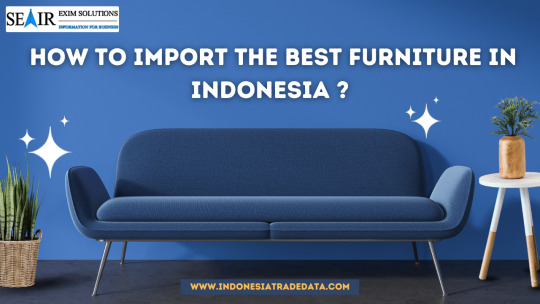
Overview of Indonesia’s Furniture Import Market
Indonesia is a significant player in the global furniture trade, known for its high-quality craftsmanship, especially in outdoor and teak furniture. Based on data from March 2023 to February 2024, 10,757 shipments of furniture were imported globally from Indonesia, marking a 2% year-over-year increase. This growth highlights Indonesia’s strong presence in the furniture market. The United States, India, and Russia lead in global furniture imports, with the US importing over 4.5 million shipments, making it the largest furniture importer from Indonesia.
However, February 2024 saw a decline in furniture imports from Indonesia, with 403 shipments—a sequential drop of 26% from January 2024 and a 60% year-over-year decrease compared to February 2023. Despite this short-term dip, the global demand for Indonesian furniture remains strong, particularly in the US, India, and Russia.
Why Does Indonesia Import Furniture?
Despite being a major exporter of furniture, Indonesia imports furniture to meet the demand for diverse styles and choices in its local market. While the country’s furniture industry focuses heavily on exports, this has led to criticism for neglecting the domestic market. The local demand is especially strong in the middle-to-upper market segments, where international brands like IKEA have seen significant growth.
In 2022, Indonesia recorded a total import value of $331 million USD for furniture, with $290 million USD coming from China. This reflects the country’s reliance on imports to cater to the local market’s evolving preferences.
Key Steps to Import Furniture from Indonesia
Step 1: Market Research and Requirements
Before importing furniture, it's essential to research the market and understand the types of furniture in demand. Whether it’s office furniture, home decor, or high-end custom pieces, knowing local design preferences and materials will help you choose the right products.
Step 2: Registering a Legal Entity
To import furniture, you must first establish a legal business entity in Indonesia. Foreign investors can set up either a PT PMA (Foreign-Owned Limited Liability Company) or a Local PT (Limited Liability Company), depending on their specific business needs.
Step 3: Obtaining Necessary Documents and Licenses
To legally import furniture into Indonesia, several key documents are required:
Import License
Letter of Credit
Bill of Entry
Country of Origin Certificate
Commercial Invoice
Customs Clearance
Export License
Step 4: Understanding HS Codes and Import Duties
Furniture imports fall under Chapter 94 of the HS Code. The applicable codes include:
Wooden furniture: HS Code 9403.60
Metal furniture: HS Code 9403.20
Plastic furniture: HS Code 9403.70
Import duty rates in Indonesia typically range from 5% to 20%, depending on the material, type of furniture, and country of origin.
Step 5: Marketing and Selling Imported Furniture
Once you've imported the furniture, it’s essential to market your products effectively. Whether you’re selling through physical stores or online platforms, a robust marketing strategy will help you succeed. Additionally, using platforms like IndonesiaTradeData.com to access shipment data and analyze market trends will provide valuable insights for scaling your business.
Indonesian Teak Furniture Imports
Teak furniture, especially popular in outdoor settings, is a major export product for Indonesia. Between November 2022 and October 2023, Indonesia imported three shipments of teak wood, marking a 200% year-over-year increase. Despite the small number of shipments, this growth highlights the rising demand for teak wood imports.
India, the United States, and the United Kingdom are the top importers of Indonesian teak wood, with India leading the way, importing 73,835 shipments, followed by the US and the UK.
Finding Outdoor Furniture Suppliers in Indonesia
Finding reliable furniture suppliers is crucial for a successful import business. IndonesiaTradeData.com is a useful platform for accessing updated data on Indonesian outdoor furniture suppliers, including shipment values, port details, HS Codes, and more. This data-driven approach will help you make informed decisions when selecting suppliers.
Conclusion
Importing furniture from Indonesia can be a profitable venture if approached with the right strategy. By conducting thorough market research, registering your business, obtaining the necessary documents, and using accurate data insights, you can successfully navigate the Indonesian furniture import process. Platforms like IndonesiaTradeData.com offer valuable resources for analyzing market trends and connecting with reliable suppliers, helping you grow your business in the competitive global furniture market.
FAQ
What are the key steps to importing furniture from Indonesia?
Find a reputable supplier, obtain necessary permits and licenses, prepare export documentation, and access reliable import-export data.
Which documents and licenses are required to import furniture into Indonesia?
You will need an Import License, General Import License (API-U), Certificate of Origin, and a Commercial Invoice, among other documents.
Why does Indonesia import furniture despite being a major exporter?
Indonesia imports furniture to meet local demand, particularly for international brands, due to the focus on exports leaving gaps in the domestic market.
#FurnitureImports#IndonesiaFurniture#TeakFurniture#OutdoorFurniture#ImportBusiness#IndonesiaTrade#FurnitureSuppliers#IndonesiaTeak#HSCode#FurnitureImportData#ExportImport#ImportLicenses#FurnitureIndustry#GlobalTrade#TeakWood#MarketResearch#FurnitureExport#IndonesiaBusiness
0 notes
Text
Want to import goods from India? We can help you obtain the necessary licenses and registrations hassle-free.

0 notes
Text
Medicine Import License For Personal Use | servicesplus
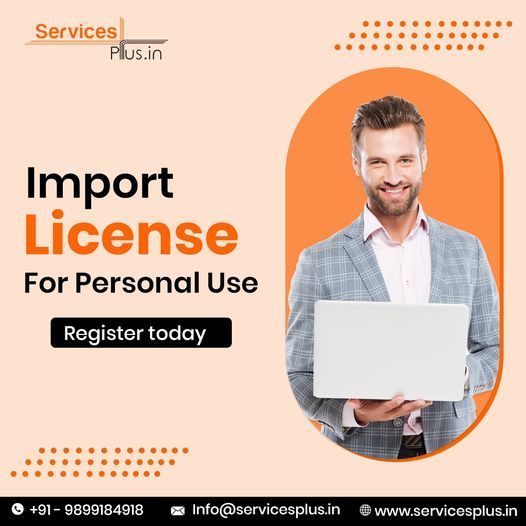
A medicine import license for personal use is a legal document that allows individuals to import certain medications for their personal use from other countries. This license is typically required to ensure that the medications being imported meet the necessary quality and safety standards.
0 notes
Text
What is (Import License)
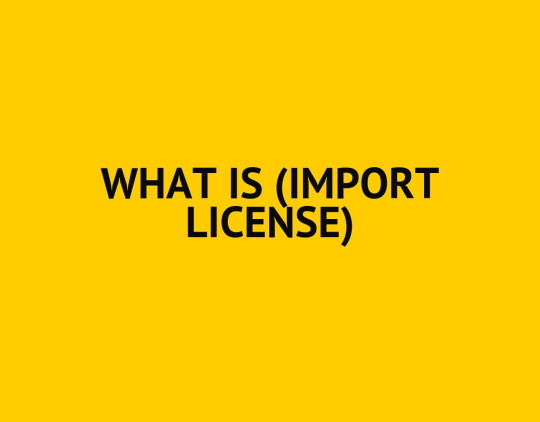
to import products in any country, there will be a need for some documents which are issued and approved by the country's government's officials, this type of documents are called Importing license.
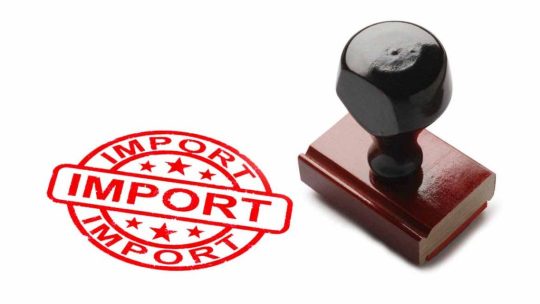
Import licensing is defined as administrative procedures demanding the submission of an application or other documentation (other than the one which is required for customs purposes) to the relevant governmental body as a prior condition for the importation of goods. Read the full article
0 notes
Photo
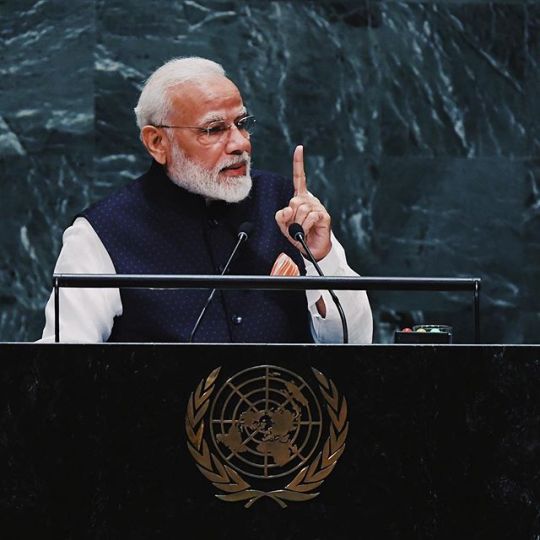
लैपटॉप-कैमरा समेत 20 प्रोडक्ट्स हो सकते हैं महँगे सरकार लैपटॉप, कैमरा सहित 20 प्रोडक्ट्स पर कस्टम ड्यूटी बढ़ाने की सोच रही है| #modigovernment #customduty #importlicensing http://www.headlinehindi.com/national-hindi-news/prices-can-be-increased-of-20-products-including-laptop-camera/?feed_id=6092&_unique_id=5f3266c4713a7
0 notes
Text
What is a "CDSCO Drugs Import License"?
The responsibility for issuing licenses for Specialized Categories of Critical Drugs, including blood and blood products, I.V. fluids, vaccines, and sera, lies with the Central Drugs Standard Control Organisation and state regulators. Importing drugs into India necessitates a Drugs Import License, which must adhere to government regulations.
CDSCO holds the designation of being the National Regulatory Authority (NRA) in India. The regulation of Import, Manufacturing, Sale, and Distribution of Drugs in India is governed by the Drugs & Cosmetics Act of 1940 and Rules of 1945.
Benefits of CDSCO Drugs Import License:
Legal Compliance
Quality Assurance
Consumer Safety
Business Credibility
Supply Chain Integrity
Customs Clearance
Marketing Authorization
Documents of CDSCO Drugs Import License:
Covering Letter
Form 8 or 8-A
TR6 Challan
Testing Protocol
Product Label and Brochures
FSC Certificate in the Country of Origin
Notarized Agreement
Ethics Committee Approval
Original Power of Attorney
Plant Master File
Drug Master File
Copy of BA/BE site registration (as approved by CDSCO in case of BA/BE approved sites)
Manufacturing License or Wholesale License (in the case of Import)
#CDSCO#PharmaceuticalImports#DrugImportLicense#RegulatoryCompliance#HealthcareRegulations#IndianPharma#ImportLicense#PharmaRegulation#QualityAssurance#ConsumerSafety#LegalCompliance#DrugRegulation#SupplyChainIntegrity#PharmaMarketEntry#CDSCOApproval#PharmaIndustry#GlobalHealthcare#DrugDistribution#PharmaBusiness#DrugSafety#cdsco registration#cdsco certificate
0 notes
Text
As a licensed import and export agency, Bindal Agencies Private Limited takes immense pleasure in introducing itself. Based on its inherent strengths and capabilities, Bindal provides reliable assistance to its customers in their export and import activities. We have been in the industry for nearly a decade, and have catered to many esteemed organizations.
0 notes